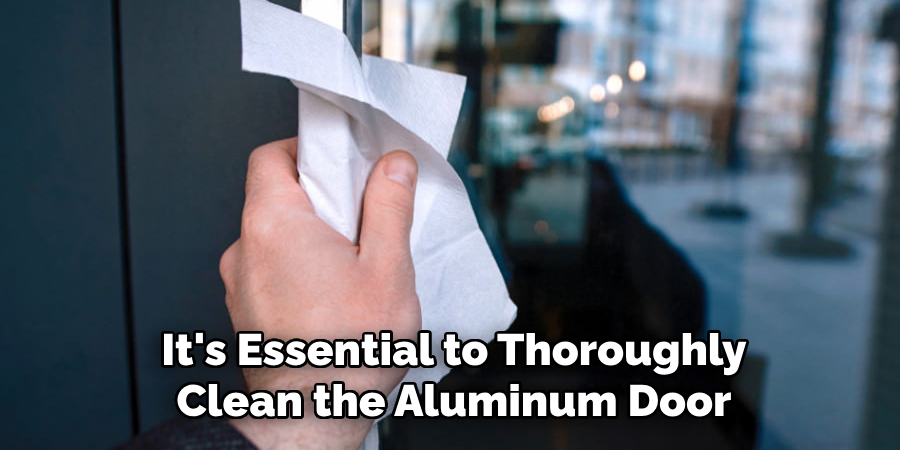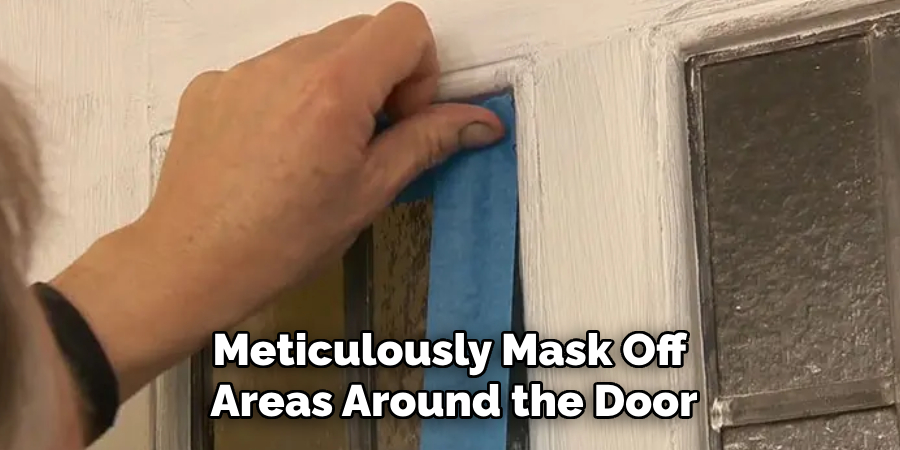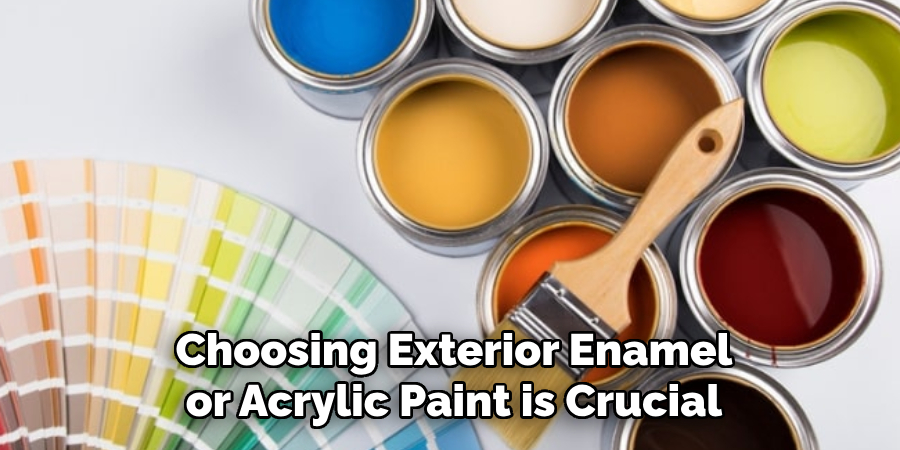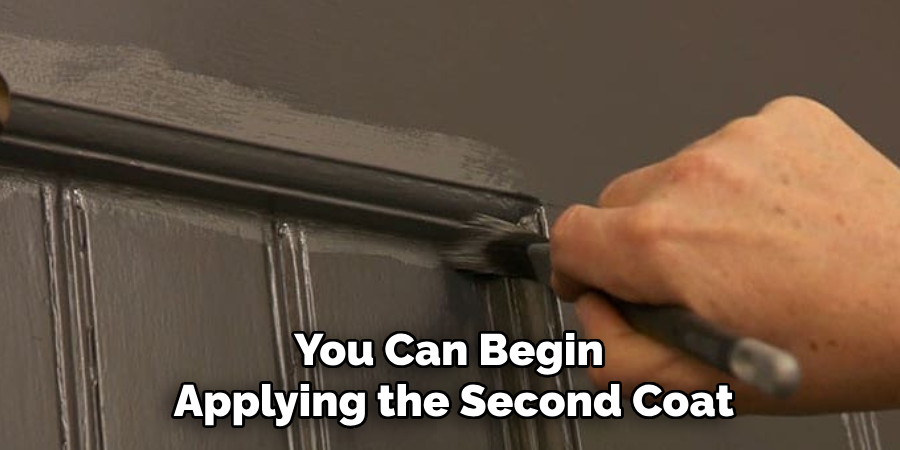Painting an aluminum door is a practical way to enhance its appearance and protect it from the elements. Whether you’re looking to refresh the look of your home or add a splash of personality, painting offers customization that fits your style. In addition to aesthetics, painting helps extend the longevity of aluminum doors by providing a protective barrier against weather-related wear and tear.

This process also aids in rust prevention, ensuring that your door retains its strength and functionality over time. This article will serve as a comprehensive step-by-step guide on how to paint an aluminium door effectively and efficiently. By following these instructions, you can achieve a professional-looking finish that enhances curb appeal and ensures durability. Let’s delve into the tools, materials, and methods necessary for successfully painting an aluminum door, transforming it into a beautiful and long-lasting feature of your home.
Tools and Materials Needed
Essential Tools
To successfully paint an aluminum door, gather the following tools: a screwdriver for removing the door if needed, painter’s tape for masking off areas, and drop cloths or plastic sheeting to protect your work area. You’ll also need a paint tray to hold your paint and a paint roller or brush to apply it effectively. Cleaning supplies, such as soap and water or a degreaser, are crucial for preparing the door’s surface free of dirt and grease. Ensuring you have these tools on hand will make the painting process smoother and more efficient.
Paint and Primer
Selecting the right paint and primer is vital for achieving a durable and attractive finish. Opt for high-quality exterior enamel or acrylic paint specifically designed for aluminum surfaces, as they provide excellent durability and weather resistance. Additionally, a self-etching primer or metal primer is recommended to ensure proper adhesion to the metal surface, preventing peeling and chipping. Consider using a clear coat as a final touch for those seeking extra protection and shine. These materials will not only enhance the appearance of your door but also offer long-lasting protection against environmental factors.
Preparing the Aluminium Door for Painting
Cleaning the Door Surface

Before painting, it’s essential to thoroughly clean the aluminum door to remove any dirt, grease, and old paint residue. Begin by preparing a mild detergent solution in a bucket. Dip a soft cloth or sponge into the solution and gently wipe down the entire surface of the door. Be thorough, paying particular attention to areas that might harbor more dirt or grime. It’s crucial to avoid using abrasive cleaners or brushes, as these can scratch and damage the aluminum surface, making it less receptive to primer and paint.
Sanding the Aluminium Door
Once the door is clean, the next step is to sand it lightly using fine-grit sandpaper. This process creates a slightly roughened surface that helps the primer adhere better. Start sanding evenly across the entire door surface, focusing carefully on any rough spots or areas where the paint is peeling.
These areas need particular attention to ensure they are smoothed out, providing an optimal base for the primer. While sanding, maintain gentle and consistent pressure to prevent gouging on the aluminum surface. After sanding, wipe away any dust with a clean, damp cloth to ensure no residue interferes with the primer application. Being precise and patient with these preparation steps will lead to a smoother finish in the final paint job.
Removing the Door or Masking the Area
Removing the Door
If accessing all areas of the door for painting is challenging, consider removing the door from its frame. Begin by gathering tools such as a screwdriver to unscrew the hinges. Enlist help if necessary, as aluminum doors can be heavy, and proper support is crucial. Start by opening the door slightly for balance, then carefully unscrew the hinge pins, beginning with the bottom hinge and working upwards. Once the door is free, lift it away from the frame and place it on a stable surface covered with a drop cloth to protect it from damage. Ensure the door is positioned securely to prevent it from tipping over or scratching.
Masking the Door Frame and Surrounding Areas

To maintain a clean application and avoid stray paint marks, meticulously mask off areas around the door that should not be painted, including the door frame, hinges, and any glass panels. Utilize painter’s tape to cover these areas accurately, ensuring straight edges and a snug fit to prevent paint seepage. Extend the tape slightly over the edges for full coverage, then press it down firmly. Lay down drop cloths or plastic sheeting around the working area to protect floors and nearby surfaces. These preparations help achieve a tidy finish and save time during cleanup.
How to Paint an Aluminium Door: Applying Primer to the Aluminium Door
Choosing the Right Primer
Selecting the appropriate primer is crucial for achieving a long-lasting and smooth finish on your aluminum door. A metal-specific primer, such as a self-etching or metal primer, is necessary to promote proper adhesion and prevent rust formation. These primers are specially formulated to bond well with the slick surface of aluminum, ensuring that the paint adheres effectively without peeling or chipping over time. Additionally, they provide a protective barrier that helps to prevent corrosion and enhance the durability of the metal door.
Applying the Primer
- Prepare the Primer: Begin by stirring the primer thoroughly to ensure even consistency. Pour it into a paint tray for ease of application.
- Apply the Primer: Using a high-quality brush or roller, apply a thin, even coat over the entire door surface. Work in long, smooth strokes to minimize brush marks and ensure full coverage. Pay special attention to edges and corners to avoid missing any areas.
- Check for Coverage: Inspect the door under good lighting to ensure that the primer covers every section evenly. Apply additional primer if any spots appear thin or lacking.
Allowing the Primer to Dry
- Follow Instructions: Allow the primer to dry according to the manufacturer’s recommendations, typically for a few hours, depending on the product and environmental conditions. Ensure the door is in a well-ventilated area to facilitate drying.
- Check for Missed Spots: Once dry, examine the door thoroughly for any missed spots or uneven coverage. Touch up these areas with a little primer, allowing the additional applications to dry thoroughly.
By taking these meticulous steps, you ensure that the aluminum door is well-prepped for painting, setting a solid foundation for achieving a professional and durable finish.
How to Paint an Aluminium Door: Painting the Aluminium Door
Selecting the Right Paint

Choosing exterior enamel or acrylic paint is crucial when painting an aluminum door due to its durability and weather-resistant properties. These types of paint are specifically formulated to withstand the elements, protecting your door from rain, sunlight, and temperature changes. Exterior enamel is known for its hard, glossy finish that resists fading and chipping, while acrylic offers excellent flexibility to resist cracking. When selecting the right color, consider the surroundings and the aesthetic you want to achieve, whether it’s a bold statement or a subtle complement. Finish options like matte, satin, or gloss can greatly influence the overall appearance, with matte providing understated elegance, satin offering a slight sheen, and gloss delivering a vibrant shine.
Applying the First Coat of Paint
- Preparation: Ensure your work area is well-ventilated, and the door is free from dust and debris. Pour the selected paint into a tray for easy access.
- Application Method: Use a high-quality roller or brush, depending on the surface texture and comfort level. Rollers are ideal for flat areas, while brushes can reach corners and detailed sections.
- Technique: Begin at one edge of the door, using smooth, even strokes to apply the paint. Maintain consistent pressure to avoid drips and streaks. Overlapping strokes slightly can help blend the edges and ensure full coverage.
- Inspection: Once the first coat is applied, inspect the surface under adequate lighting, ensuring no areas are missed. Address any thin spots by gently retouching them after the initial layer has dried to prevent unevenness.
By following these steps, the aluminum door will achieve an appealing look and enhanced protection and longevity.
Applying Additional Coats of Paint
Allowing the First Coat to Dry
After applying the first coat of paint, it is crucial to let it dry completely to ensure a smooth and durable finish. Typically, this involves waiting for 1–2 hours, although the exact time may vary depending on the type of paint used and environmental conditions like temperature and humidity.
This waiting period ensures the paint bonds properly with the primer, reducing the risk of peeling or bubbling. Before proceeding with additional coats, carefully inspect the surface for any missed spots or areas with thin coverage. Address these spots by applying a touch-up, allowing them to dry thoroughly before moving on to the next coat. Patience at this stage ensures that each layer adheres well, enhancing the overall quality and longevity of the paint job.
Applying the Second Coat

Once the first coat is fully dry, you can begin applying the second coat to achieve a more uniform and robust finish. Use the same high-quality brush or roller, ensuring that it is not overloaded with paint to prevent drips and uneven surfaces. Start from one side of the door, working your way across with long, even strokes. Maintain consistent pressure throughout to ensure smooth coverage without leaving marks. Overlap strokes slightly to blend the edges and achieve a seamless look. This second layer fills in any gaps left by the first coat, reinforcing color depth and providing additional protection against the elements.
Sealing the Paint
Applying a Clear Coat or Protective Finish
Applying a clear coat or protective finish is critical in safeguarding your newly painted aluminum door from the damaging effects of weather and daily wear. A clear coat enhances the paint’s shine, deepens the color, and provides an additional barrier against moisture, UV rays, and chips.
To apply the clear coat, ensure the painted surface is clean and dry. Pour the clear coat into a tray and use a clean, high-quality brush or roller. Start at one edge and use long, even strokes to cover the entire door, paying special attention to corners and edges. Apply the coat thinly to prevent drips and avoid leaving brush marks. Allow the first layer to dry completely before considering a second application for added protection.
Allowing the Paint to Cure

Letting the paint fully cure before handling or reinstalling the door is essential. Depending on the paint type, This process usually takes 24 to 48 hours. A thorough cure ensures the paint’s durability and longevity, preventing damage that could occur if the surface is touched or stressed prematurely.
Reinstalling the Door and Final Touches
Reinstalling the Door
Once the paint is fully dry and cured, carefully reinstall the door into its frame, ensuring it fits securely. Begin by aligning the hinges properly and securing them with screws. Check the door’s functionality, ensuring it opens and closes smoothly. Verify that the door handle and lock are aligned and functioning correctly, making any necessary adjustments. Proper reinstallation is crucial for both aesthetic appeal and security.
Touching Up Any Missed Areas
After reinstallation, inspect the door for any missed spots or uneven areas in the paint application. Use a small brush to carefully touch up these areas, allowing the paint to dry thoroughly. Conduct a final check to ensure a smooth finish, verifying that the door looks fresh and well-maintained. Touching up any imperfections enhances visual appeal and ensures long-lasting protection against the elements.

Conclusion
Painting an aluminum door involves a series of meticulous steps, from preparation to the final touches. The process begins by choosing the right color and preparation through the cleaning and setup of the workspace. It applies multiple coats of paint and a protective finish to ensure durability and visual appeal. The key to a successful project lies in using high-quality materials and taking adequate time for each step. Regular maintenance is crucial to keep the door looking great. By following these guidelines on how to paint an aluminium door, you’ll ensure it remains protected and attractive for years.
Edmund Sumlin is a skilled author for Metal Fixes, bringing 6 years of expertise in crafting a wide range of metal fixtures. With a strong background in metalwork, Edmund’s knowledge spans various types of fixtures, from decorative pieces to functional hardware, blending precision with creativity. His passion for metalworking and design has made him a trusted resource in the industry.
Professional Focus:
- Expert in Metal Fixtures : Edmund aesthetic specializes in creating durable and innovative metal fixtures, offering both appeal and functionality. His work reflects a deep understanding of metalworking techniques and materials.
- Sustainability Advocate : He is dedicated to using sustainable practices, ensuring that every fixture is crafted with eco-friendly methods while maintaining high-quality standards.
In his writing for Metal Fixes, Edmund provides valuable insights into the latest trends, techniques, and practical advice for those passionate about metal fixtures, whether they are professionals or DIY enthusiasts. His focus on combining artistry with engineering helps others discover the true potential of metal in design.


